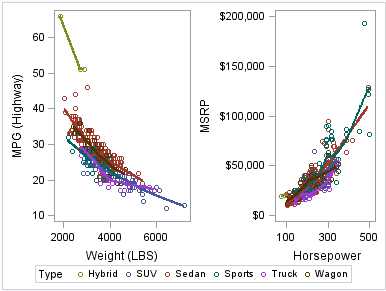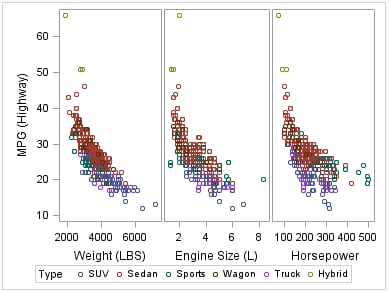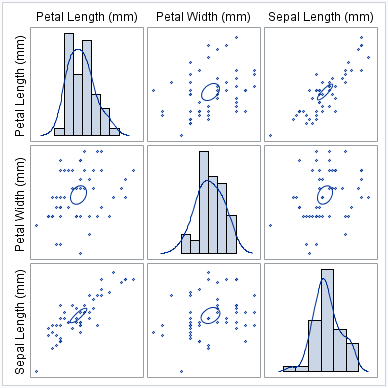SGSCATTER Procedure
Concepts: SGSCATTER Procedure
Statements for Creating Panels
PLOT Statement
The
PLOT statement is used to create a paneled graph of scatter plots
where each graph cell has its own independent set of axes. Each variable
pair that you specify in the PLOT statement creates an independent
graph cell. You can also overlay fit plots and ellipses on each cell
by using options.
For example, Example Graph from the PLOT Statement shows a graph that contains two independent cells. Each
cell contains a scatter plot and a loess curve.
COMPARE Statement
The COMPARE statement is used to create a shared axis
panel, also called an MxN matrix. The list of X and Y variables are
crossed to create each cell in the graph. All cells in a row share
the same row axis range. All cells in a column share the same column
axis range.
MATRIX Statement
The MATRIX statement is used to create a scatter plot
matrix. Each of the variables that you specify are graphed against
each other to create the graph. You can use the ELLIPSE option to
overlay a confidence ellipse on each cell in the panel.



